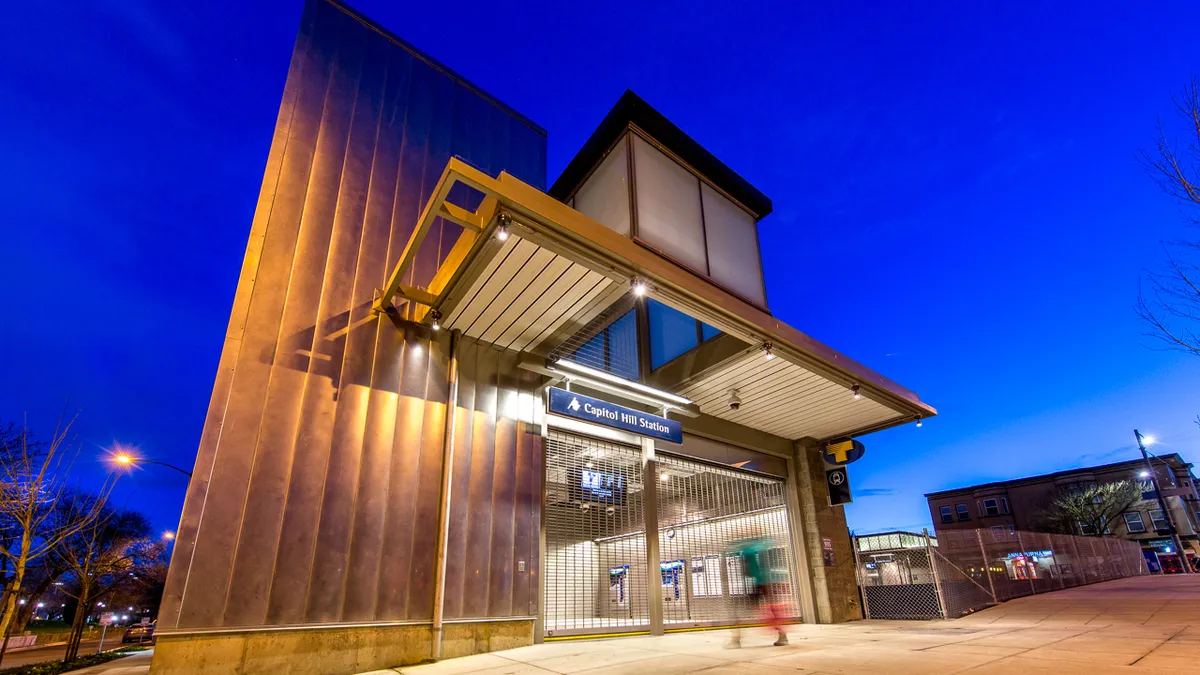Dive Brief:
- Turner Construction Co. has filed a $12.5 million lawsuit against Central Puget Sound Regional Transit Authority (Sound Transit) claiming breach of contract for work it performed on one of the authority's light rail stations, according to The Seattle Times.
- Turner argues that Sound Transit made design changes and gave directives during the construction process that cost the contractor money in labor and materials, including requiring that concrete walls cure longer than necessary. The firm also claims that the authority made design changes to walls in place and insisted that Turner inject grout into leaking areas of the station, although that was supposed to be the job of maintenance crews.
- Turner performed the work under a general contractor/construction manager contract, which encourages early collaboration between the owner and contractor, but Turner says its relationship with Sound Transit was never such a partnership. A Sound Transit spokesperson said Turner's claims are a result of contractor error. Currently, Sound Transit is entering the assessment and early- development phases for $6.7 billion of light rail projects that aim to connect Seattle and its western suburbs.
Dive Insight:
Collaborative project delivery methods like design-build or integrated project delivery are supposed to eliminate most of the issues that Turner claims happened on the Capitol Hill station project. By working out design conflicts before construction begins, collaboration can reduce change orders and, at the very least, ensure that the owner and contractor are starting from the same page.
California had a project delivery first in 2016 — the widening of Interstate 405 through Orange County. When the Orange County Transportation Authority awarded a $1.2 billion contract to OC 405 Partners, a joint venture led by OHL USA and Astaldi Construction, it was the first design-build contract issued under a state law enacted to allow the method.
The Rhode Island Department of Transportation (RIDOT) recently awarded a $410 million design-build contract — its largest single contract ever — for the replacement of the 6-10 interchange in Providence. As part of the deal, the contractor will replace seven structurally deficient bridges. The RIDOT said because the design and construction processes will happen concurrently as part of the design-build process, the chances of design errors and budget overruns will be reduced.
According to the Design-Build Institute of America, only three states allowed the design-build method to be used on public projects in 1993. Now more than half of all states allow their agencies to employ design-build.














